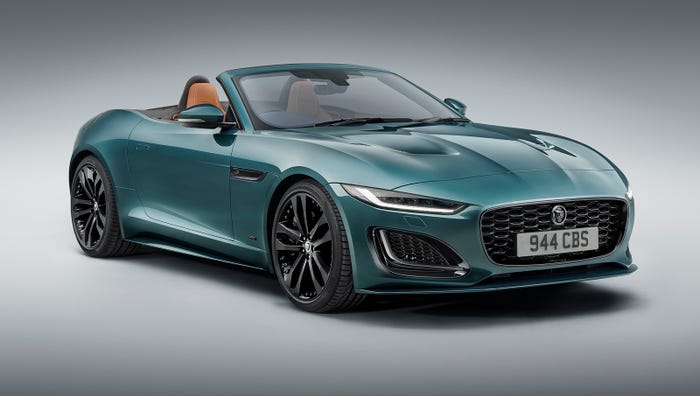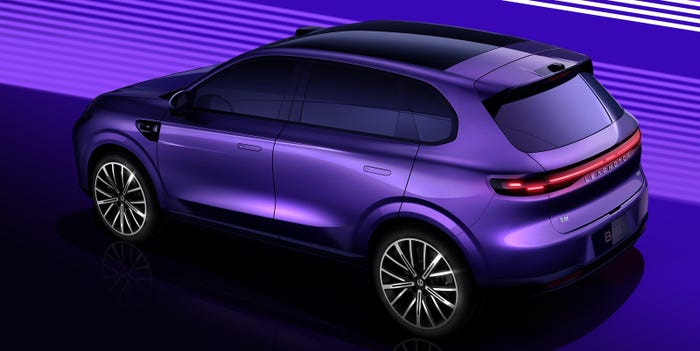Mercedes CLA Just Not Special Enough
The new entry-level 4-door is styled to draw in mainstream buyers, but powertrains are disappointing and the cramped back seat and lackluster interior aren’t up to the tri-star brand’s usual standards.
October 4, 2013

WASHINGTON – The reason Mercedes-Benz is introducing a new 4-cyl. entry-level sedan, the CLA, which starts below $30,000, is valid enough: to lure in new customers at lower income levels and raise the brand’s average fleet fuel economy to meet future U.S. regulations.
Arriving in showrooms now, the CLA is a competent car but disappoints when it comes to performance and interior appointments.
Truth be told, it’s a little shocking to hear Mercedes executives say they want the CLA to compete with up-level versions of the Ford Fusion, Honda Accord and Nissan Altima midsize sedans.
But similar panic attacks were triggered when Mercedes introduced the M-Class, Porsche the Cayenne and BMW the X5, and all those utility vehicles did was bolster bottom lines – without tarnishing their sport-luxury pedigrees.
That Mercedes customers now may cross-shop Fords, Nissans and Hondas and vice versa – not to mention Hyundais, Toyotas and Chevrolets – is merely the price to be paid if the brand is to gain market share.
Mercedes is on pace in 2013 to lead luxury vehicle sales in the U.S. for the third year in a row, and its market share never has been higher. But certainly the automaker has noticed this trend: Mainstream midsize sedans have made tremendous strides in providing a near-luxury experience, and many of them sell for more than $30,000 well-equipped.
But the CLA, based on two days of evaluation here, may struggle to appeal to this massive pool of buyers.
Though beautifully styled, dynamically sound and loaded with safety technology, the car suffers from a cramped back seat, excessive hard plastic in the cabin, disappointing powertrains and a human-machine-interface central controller that is less than user-friendly.
Let’s start with the drivetrain. The transversely mounted M270 2.0L turbo is Mercedes’ newest direct-injected 4-cyl. gasoline engine for the U.S. market, intended eventually to replace the 1.8L turbo-4 currently found in the C-Class. The next-generation, rear-wheel-drive C-Class will get the same engine in a longitudinal layout.
On paper, this engine impresses in both states of tune: 208 hp in the front-wheel-drive CLA250 or 355 hp in the high-output all-wheel-drive CLA45 AMG 4Matic.
But turbo lag is a problem for both vehicles. Spooling up to full power takes too long. When the cars do get going, the acceleration fails to come on in a linear fashion. What’s missing is the smooth, confident propulsion most Mercedes customers expect when the pedal goes down.
Perhaps the engines are less to blame than the 7-speed dual-clutch transmission, the only gearbox available across the range.
Many DCTs are capable of quick, seamless shifts and, as a result, have replaced conventional torque-converter automatics and even 3-pedal manuals in many sporty vehicles.
In the CLA, manually shifting with paddles mounted to the steering wheel comes at a glacial pace. That might be acceptable for the CLA250, the entry-level model that will be driven almost exclusively in comfort-automatic mode.
Kudos to the CLA250 for achieving 34.5 mpg (6.8 L/100 km) during a 75-mile (121-km) drive along mostly rural roads here.
But the CLA45 has three letters in the name that raise a driver’s expectations: AMG. This is the Mercedes sub-brand that takes on BMW’s M division in the high-performance sector.
The AMG model carries a price premium over the CLA250 of more than $17,000, and those buyers ponying up likely will find automatic comfort mode uninspiring. Sport mode allows crisper gear shifts to come at higher engine speeds, which is slightly better.
But the best way to experience the AMG is in manual mode, which requires paddle shifting through every gear.
The AMG car achieves an attractive power-to-weight ratio, but on the road the car just doesn’t feel that fast or sound very sporty. It burbles nicely under hard throttle, but in general the soundtrack lacks emotion. It’s no match for a more affordable V-8 Ford Mustang, which illustrates that sometimes there is no replacement for displacement.
In fairness, the test route was not conducive to aggressive driving, crossing through many small towns with schools in session. A race track would have been the proper place to demonstrate the AMG’s capability.
One reason to like the AMG variant is respectable fuel economy: Some journalists achieved better than 27 mpg (8.7 L/100 km) during two days of driving. Try that with a V-8 Mustang.
Inside, both versions of the CLA come across as downmarket. Hard plastic covers the center console, and metallic accents consist of brushed aluminum veneer applied to a plastic surface beneath.
Power seat controls appear in the position Mercedes pioneered long ago, conveniently placed on the driver and passenger doors. But the buttons representing the seat bottom and seat back are, once again, simple black plastic.
Some of the AMG cars evaluated have handsome carbon-fiber trim on the instrument panel, but that add-on carries a $950 option price. On the CLA250, basic metallic trim, again consisting of brushed aluminum veneer, replaces carbon fiber on the IP.
All the test vehicles evaluated came with predominantly black interiors, but other colors are available that might make the CLA more unique and appealing. Burled walnut and black ash wood also are offered in addition to metallic trim.
There’s brown and ash leather, as well as beige MB-Tex synthetic leather. AMG seats are extra-supportive and trimmed with red stitching and seatbelts.
From the outside, the car is handsome with its coupe-like profile, but the design makes for a cramped backseat. A 5-ft.-10-in. (178-cm) rear passenger will be touching the headliner in all three seating positions, and the outside view is obstructed badly by a wide C-pillar.
Mercedes calls this car a coupe, but it has four doors and the lack of space in back could be a deal-breaker for some buyers.
Pricing presents more difficulties for the CLA. USB jacks allowing for iPod connectivity are fast becoming standard on mainstream cars, but not the new Mercedes. The hookup comes as part of a $2,300 Premium package that includes heated front seats, dual-zone climate control and a Harman Kardon sound system.
Want a navigation system? It’s not in the Premium package. Instead, it’s found in the $2,370 Multimedia kit that includes a 7-in. (18-cm) LCD screen, Gracenote media database and 6-disc CD/DVD changer.
Bottom line: Any CLA found close to the $29,990 base price will be downright skeletal.
Still, mainstream customers invited to cross-shop the CLA may be smitten with the idea of owning a small piece of Stuttgart�’s famous brand. A Mercedes-Benz is aspirational, unlike the bread-and-butter cars identified for conquest.
Then again, they may find better value elsewhere.
'14 Mercedes-Benz CLA250
Vehicle type | 4-door, 5-passenger, front-wheel-drive coupe |
|---|---|
Engine | 2.0L DOHC turbocharged 4-cyl.; aluminum block/head |
Power (SAE net) | 208 hp @ 5,500 rpm |
Torque | 258 lb.-ft. (350 Nm) @ 1,250-4,000 rpm |
Bore x stroke (mm) | 83.0 x 91.9 |
Compression ratio | 9.8:1 |
Transmission | 7-speed dual-clutch |
Wheelbase | 106.3 ins. (270 cm) |
Overall length | 182.3 ins. (463 cm) |
Overall width | 70 ins. (179 cm) |
Overall height | 56.6 ins. (144 cm) |
Curb weight | 3,264 lbs. (1,481 kg) |
Price as tested | $43,245 (including $925 destination charge) |
Fuel economy | 26/38 mpg (9.0-6.2 L/100 km) |
Competition | Ford Fusion, Nissan Altima, Honda Accord, Audi A3 |
Pros | Cons |
Low base price turns you on | High option prices turn you off |
Nothing wrong with 34.5 mpg | Powertrains generally unexciting |
Beautifully styled outside | Lackluster inside |
You May Also Like



